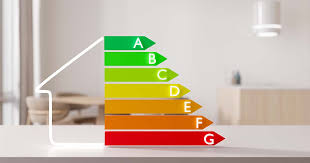Got an Older Property? Here’s Why conducting an EPC Is Even More Important

Older properties have a certain charm that modern builds often lack. Original features, solid construction and period character make them desirable for many buyers and tenants. Yet behind those attractive facades often lies a less appealing reality: poor energy efficiency that translates into higher energy bills and lower comfort levels throughout the year.
If you own or manage an older building, getting an Energy Performance Certificate isn’t just a legal checkbox. Whether you’re dealing with a Victorian terrace or a post-war commercial block, an EPC London assessor can identify exactly where your property is losing heat and money. The certificate provides a clear starting point for improvements that actually make financial sense, rather than guessing which upgrades might help.
Why Older Properties Typically Score Lower
Age Equals Energy Loss: Most buildings constructed before modern building regulations simply weren’t designed with energy efficiency in mind. Heating was cheap, insulation standards didn’t exist, and single-glazed windows were the norm. These features created significant heat loss that pushes energy ratings down into bands E, F or even G.
Construction Methods Matter: Solid brick walls, common in properties built before the 1920s, conduct heat far more readily than cavity wall construction. Without any insulation barrier, warmth simply transfers through the masonry to the outside air. This fundamental design characteristic means older buildings work harder to maintain comfortable temperatures.
Outdated Heating Systems: Many period properties still rely on ageing boilers or inefficient heating systems that were installed decades ago. These systems consume more fuel whilst delivering less heat than modern condensing boilers. The combination of poor insulation and inefficient heating creates a perfect storm for elevated energy consumption.
What an EPC Actually Reveals
Specific Problem Areas Identified: An EPC assessment pinpoints exactly where your property is losing energy. The report breaks down performance across heating, hot water, lighting and insulation. You’ll see numerical ratings for each element, making it clear which areas need attention first and which improvements offer the best return.
Realistic Improvement Recommendations: The certificate includes tailored suggestions ranked by cost-effectiveness. For a Georgian townhouse, this might mean loft insulation before wall insulation. For a 1960s office building, upgrading the heating controls could deliver better savings than replacing windows. These recommendations consider your property’s specific construction and current condition.
Cost and Savings Projections: Each suggested improvement comes with estimated installation costs and potential annual savings. This information helps you prioritise upgrades based on your budget and expected payback period. Some measures might save £200 annually whilst costing £500 to install, whilst others require larger investments for smaller returns.
Common Issues Found in Period Buildings
Older properties share certain energy efficiency challenges that appear repeatedly during assessments:
- Lack of loft insulation or inadequate depth allowing heat to escape through the roof space, which represents one of the easiest and most cost-effective improvements available.
- Solid wall construction without cavity insulation options, requiring either internal or external wall insulation systems that demand careful planning and professional installation.
- Draughty floors where suspended timber construction creates airgaps beneath ground floor rooms, causing cold spots and continuous heat loss throughout winter months.
- Inefficient glazing that accounts for significant heat transfer, particularly in properties with large window areas or original single-glazed units still in place.
- Outdated boiler systems operating at 60-70% efficiency compared to modern condensing boilers that achieve 90%+ efficiency ratings and reduce fuel consumption substantially.
Listed Buildings and Conservation Areas
Planning Restrictions Apply: Properties with listed status or those in conservation areas face additional constraints on doing improvements. External wall insulation might not receive approval. Replacing original windows could be prohibited outright. An experienced assessor understands these limitations and suggests alternatives that comply with heritage requirements.
Internal Solutions Exist: When external changes aren’t possible, internal insulation, secondary glazing and improved heating controls offer viable alternatives. These approaches maintain the external appearance whilst delivering meaningful efficiency gains. The key lies in finding the right balance between conservation and practical improvement.
The Roadmap for Improvements
Prioritise Quick Wins: Start with measures that deliver immediate impact for modest investment. Loft insulation, draught proofing and heating controls typically cost less than major works. These changes can lift your EPC rating by one or two bands whilst you plan larger projects.
Plan Long-Term Upgrades: Use the EPC recommendations to create a phased improvement strategy. Perhaps tackle insulation this year, then upgrade the boiler next year when the current system needs replacement anyway. This approach spreads costs whilst steadily improving efficiency and comfort levels.
Consider Future Requirements: Energy efficiency standards continue to tighten. The Minimum Energy Efficiency Standards already require rental properties to achieve band E or better. Planning improvements now will position your property ahead of future regulatory changes and maintain its marketability.
Beyond Legal Compliance
Tenant Satisfaction Improves: Properties with better energy ratings attract and retain tenants more easily. Lower heating bills make accommodation more affordable. Consistent temperatures throughout rooms increase comfort. These factors reduce void periods and support higher rental values in competitive markets.
Property Value Protection: Energy efficiency increasingly influences property valuations and buyer decisions. A poor EPC rating can deter purchasers or provide negotiating leverage to reduce offers. Addressing efficiency issues protects your investment value and broadens the pool of potential buyers when selling.
Conclusion
An Energy Performance Certificate does more than satisfy legal requirements for older properties. It provides an honest assessment of where your building loses energy and offers practical guidance for improvements that actually work. Rather than viewing the EPC as another compliance burden, treat it as a valuable diagnostic tool that identifies opportunities to reduce costs, improve comfort and protect property value. If you’re ready to understand your older property’s energy performance, consider booking an assessment with an experienced surveyor who understands period buildings.




